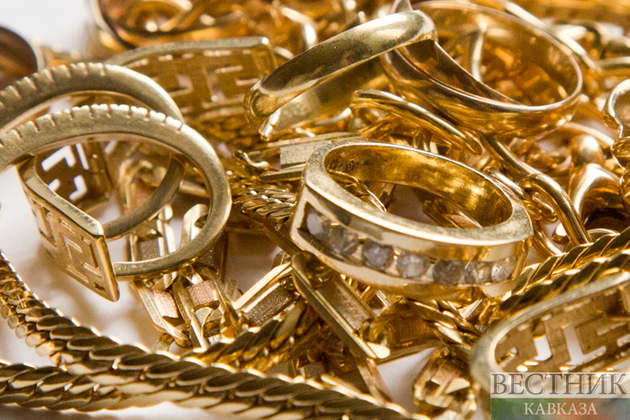Amid the Taliban, group prohibited in Russia, takeover, ancient artefacts are finding their way to international collectors. According to Financial Times, when Afghan treasures, including necklaces and earrings decorated with turquoise stones, surfaced on the black market in Iran last year, guardians of Afghanistan’s cultural heritage feared that the country’s takeover by the Taliban* would trigger a wave of looting of ancient artefacts.
The pieces that showed up in neighbouring Iran were reportedly from Afghanistan’s jewellery-rich Bactrian Treasure hoard, which was uncovered in 1978 and has since toured museums around the world. Highlights include a gold crown and other 2,000-year-old jewellery pieces covered in semi-precious stones. “When my husband and I heard the news, we had tears in our eyes,” says London-based jeweller Sima Vaziry, who married into Afghanistan’s former royal family.
The original exhibition, “Afghanistan: Hidden Treasures From the National Museum, Kabul”, had helped to put Afghan jewellery on the map. After stops in Washington, New York and San Francisco, the show arrived at the British Museum, where Vaziry’s own Afghan-inspired jewellery collections went on sale in the gift shop. The exhibition brought in more than £3mn for the Afghan treasury.
“In terms of bling, it’s outstanding,” says Gil Stein, professor of Near Eastern archaeology at the University of Chicago. “The Iran news broke my heart. I hope these people keep it and don’t melt it. It went for nothing. It’s a piece of history. In all conflict zones, this happens.”
The Taliban* government has stated it is attempting to track down the Bactrian Treasure. Ahmadullah Wasiq, deputy head of the country’s Cultural Commission, told an Afghan television news channel that the government “will take serious actions if this and other ancient items are moved out of the country”.
Meanwhile, some archaeologists are concerned about jewellery that has yet to be unearthed. “Afghanistan was an ancient crossroads and an emerging gate of ancient civilisation,” says Noor Agha Noori, former director of the Institute of Archaeology in Kabul. “Therefore, strong evidence of various dynasties that ruled the region can be found at archaeological sites.”
Stein adds: “You will have items from the Yuezhi nomadic invasions and the Iranians and Ai Khanoum. It was the capital of the Greco-Bactrian Hellenistic kingdom after Alexander the Great’s empire split up. These were all periods of great wealth when there would be rich jewellery.
Many areas of Afghanistan have been home to artisan jewellers for centuries, including Badakhshan, Takhar, Ghazni and Kandahar provinces. Even so, “the mineralisation of gold, and other precious metals, is relatively underexplored,” says Noori.
Looting of artefacts has long been a problem, though. “Many sites are unguarded,” Noori explains. Because of the economic crisis, people in remote areas are doing illegal excavations and selling pieces at cheap prices.”
Nicolas Engel, a curator of Afghan art at the Musée Guimet in Paris, says lootings were “reported in mid-November in Tepe Zargaran in Balkh [province], which was excavated by the Afghan Institute of Archaeology and the French Archaeological Delegation in Afghanistan [DAFA] between 2004 and 2008”.
The cultural worth of looted artefacts is far more relevant than their purported monetary value. Any archaeological site or cache of artefacts that has not been documented and is illegally excavated, with items sold through the international illicit art market, deprives a nation of irreplaceable heritage.
Western auction houses are monitoring the situation. “I would guess there’s far more on the books of auction houses and dealers in Europe, the US and Japan [than in Iran],” says Jolyon Leslie, a longtime Kabul resident and architect working to safeguard Afghanistan’s cultural heritage.
The Taliban* government has yet to announce a policy on jewellery. Leslie says most of the historic jewellery is still handled by Afghan dealers working in league with international collectors.
Estimates suggest that jewellery is just a small part of what has been lost. “Most looted or illegally excavated material finds its way into the hands of wealthy collectors whose greed drives the black market,” says Leslie.
While a few organisations and international development groups are uncertain whether, and how, they will be allowed to continue their work in Afghanistan, Stein says it is important to alert everyone — from dealers to consumers — so they will not be able to claim ignorance. “It’s really important to protect this heritage and alert people that it’s out there,” he says. “You can’t stop it being looted and smuggled but, at least at the consumer end, people can’t say they didn’t know.”
* "The Taliban" is a movement prohibited in Russia






